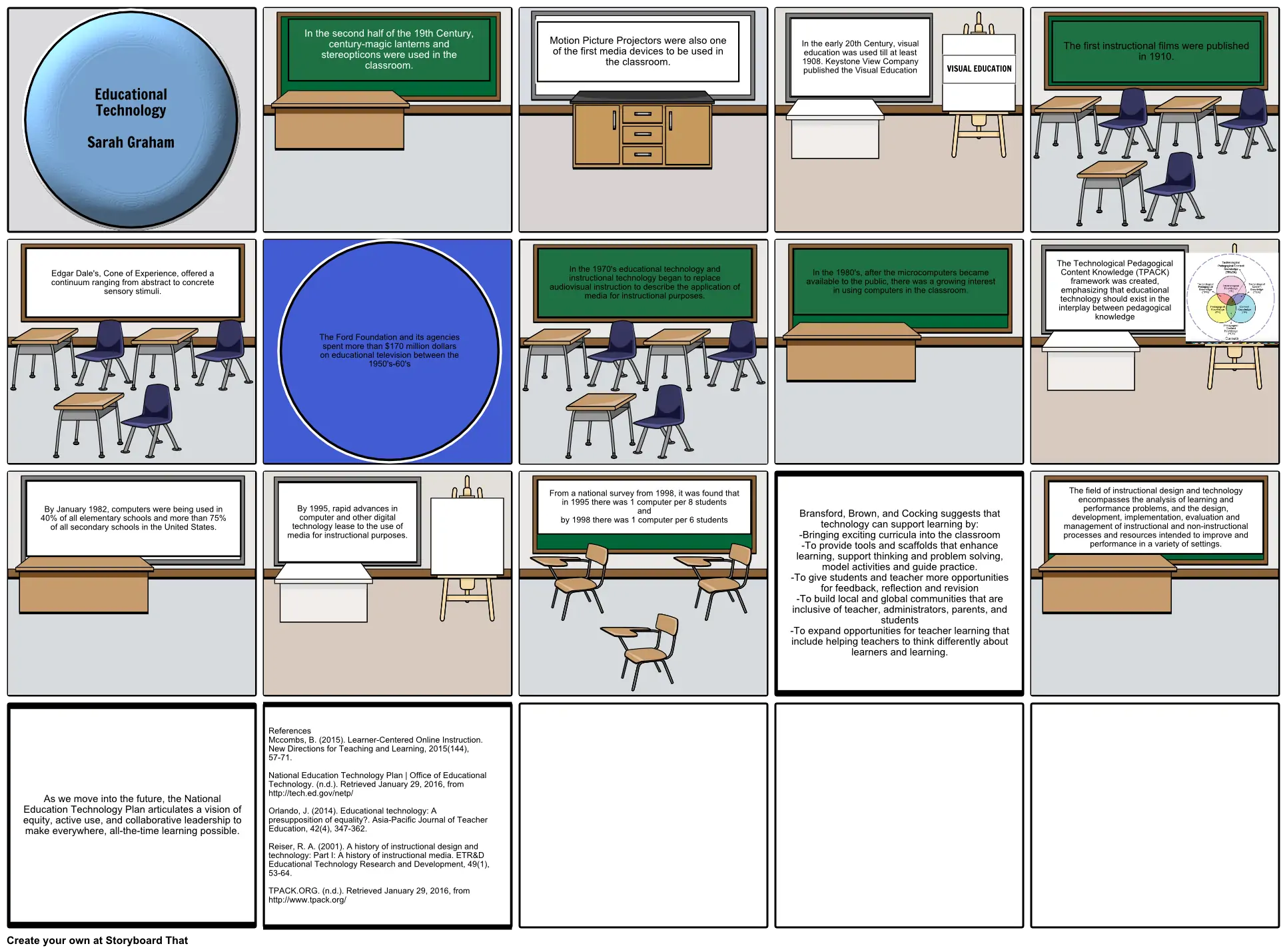Educational Technology

Snemalna Knjiga Besedilo
- Educational Technology Sarah Graham
- In the second half of the 19th Century, century-magic lanterns and stereopticons were used in the classroom.
- Motion Picture Projectors were also one of the first media devices to be used in the classroom.
- In the early 20th Century, visual education was used till at least 1908. Keystone View Company published the Visual Education
- VISUAL EDUCATION
- The first instructional films were published in 1910.
- Edgar Dale's, Cone of Experience, offered a continuum ranging from abstract to concrete sensory stimuli.
- The Ford Foundation and its agencies spent more than $170 million dollars on educational television between the 1950's-60's
- In the 1970's educational technology and instructional technology began to replace audiovisual instruction to describe the application of media for instructional purposes.
- In the 1980's, after the microcomputers became available to the public, there was a growing interest in using computers in the classroom.
- The Technological Pedagogical Content Knowledge (TPACK) framework was created, emphasizing that educational technology should exist in the interplay between pedagogical knowledge
- By January 1982, computers were being used in 40% of all elementary schools and more than 75% of all secondary schools in the United States.
- By 1995, rapid advances in computer and other digital technology lease to the use of media for instructional purposes.
- From a national survey from 1998, it was found that in 1995 there was 1 computer per 8 students and by 1998 there was 1 computer per 6 students
- Bransford, Brown, and Cocking suggests that technology can support learning by: -Bringing exciting curricula into the classroom -To provide tools and scaffolds that enhance learning, support thinking and problem solving, model activities and guide practice. -To give students and teacher more opportunities for feedback, reflection and revision -To build local and global communities that are inclusive of teacher, administrators, parents, and students -To expand opportunities for teacher learning that include helping teachers to think differently about learners and learning.
- The field of instructional design and technology encompasses the analysis of learning and performance problems, and the design, development, implementation, evaluation and management of instructional and non-instructional processes and resources intended to improve and performance in a variety of settings.
- As we move into the future, the National Education Technology Plan articulates a vision of equity, active use, and collaborative leadership to make everywhere, all-the-time learning possible.
- References Mccombs, B. (2015). Learner-Centered Online Instruction. New Directions for Teaching and Learning, 2015(144), 57-71. National Education Technology Plan | Office of Educational Technology. (n.d.). Retrieved January 29, 2016, from http://tech.ed.gov/netp/ Orlando, J. (2014). Educational technology: A presupposition of equality?. Asia-Pacific Journal of Teacher Education, 42(4), 347-362. Reiser, R. A. (2001). A history of instructional design and technology: Part I: A history of instructional media. ETR&D Educational Technology Research and Development, 49(1), 53-64. TPACK.ORG. (n.d.). Retrieved January 29, 2016, from http://www.tpack.org/
Ustvarjenih več kot 30 milijonov snemalnih knjig

